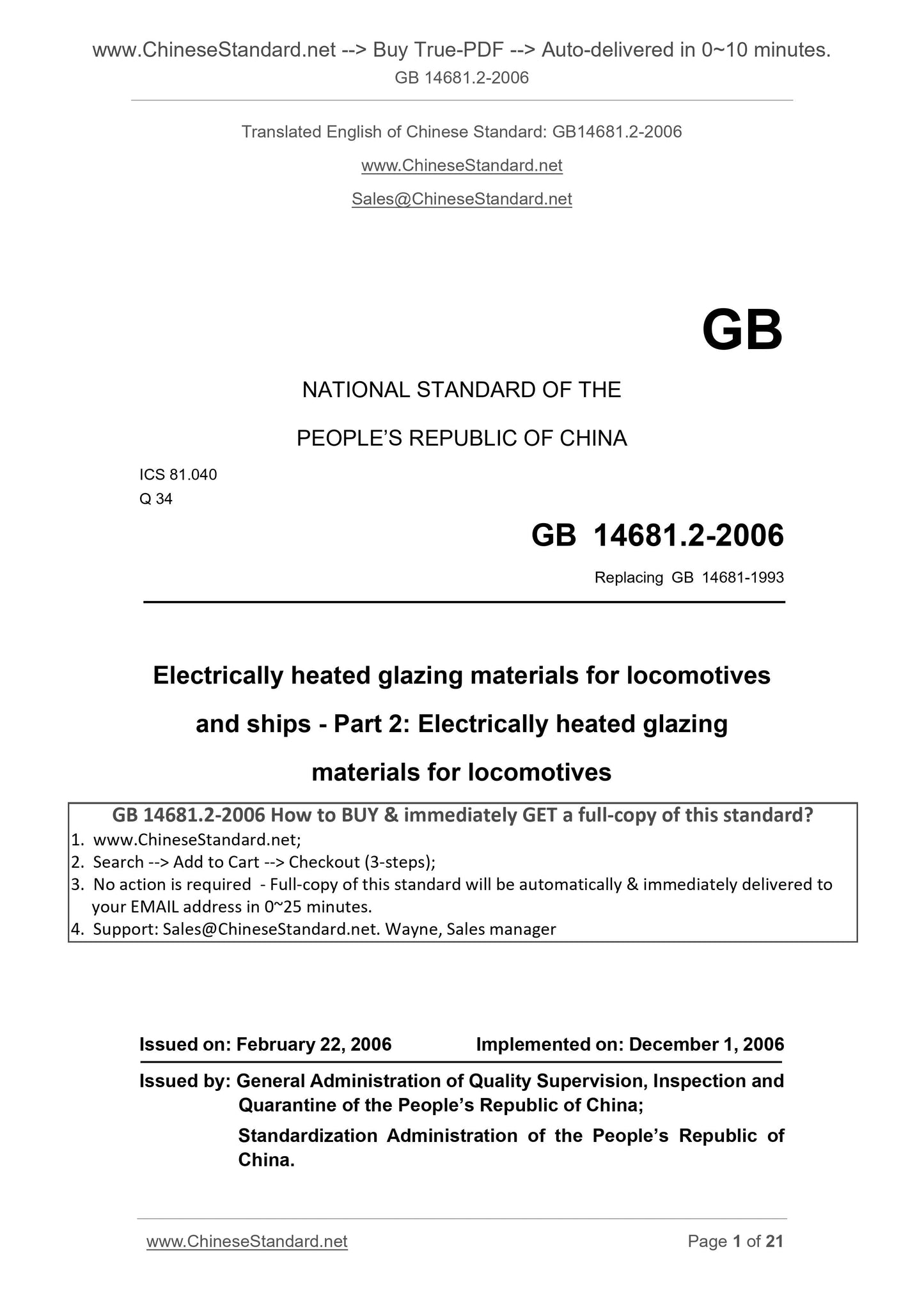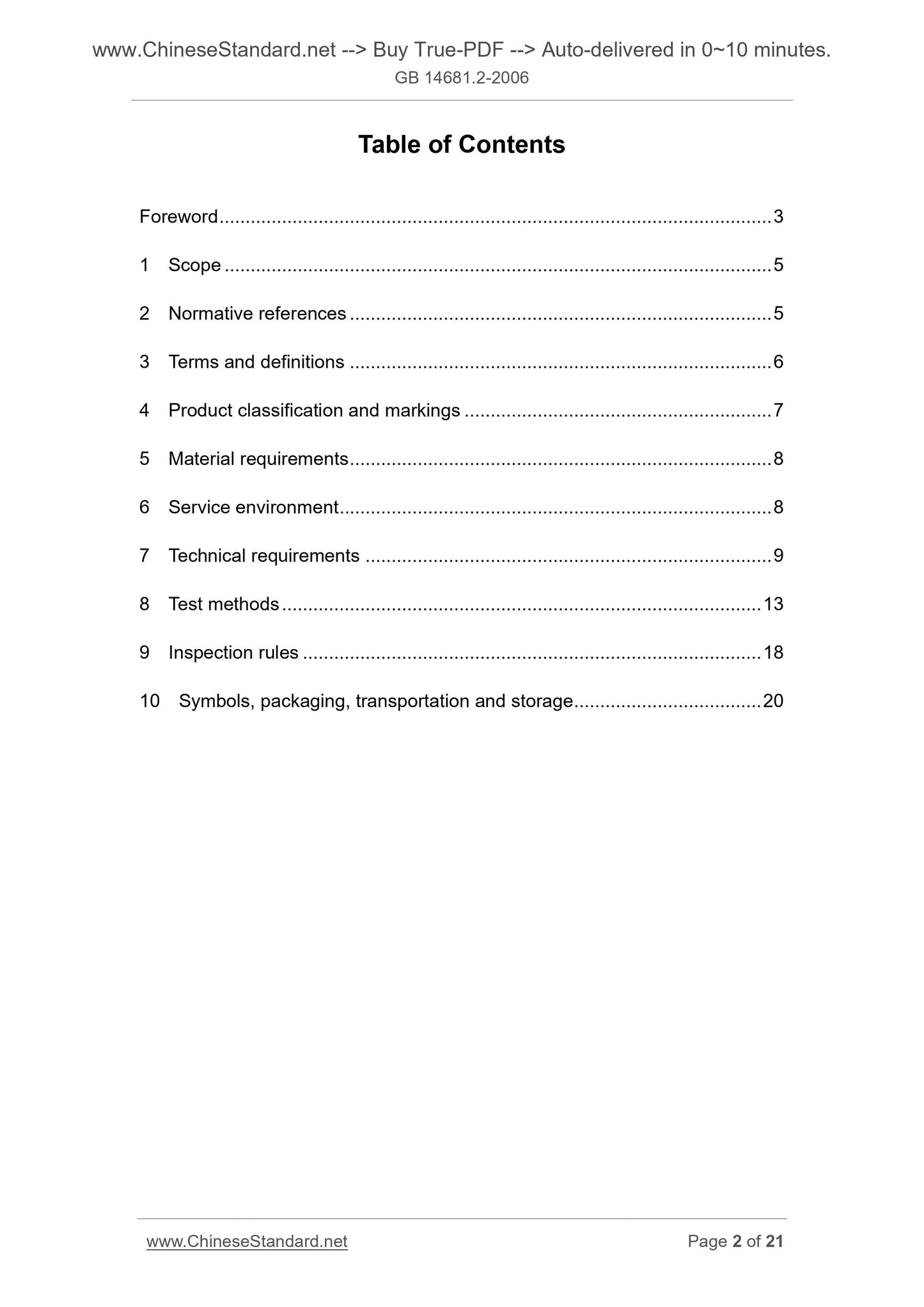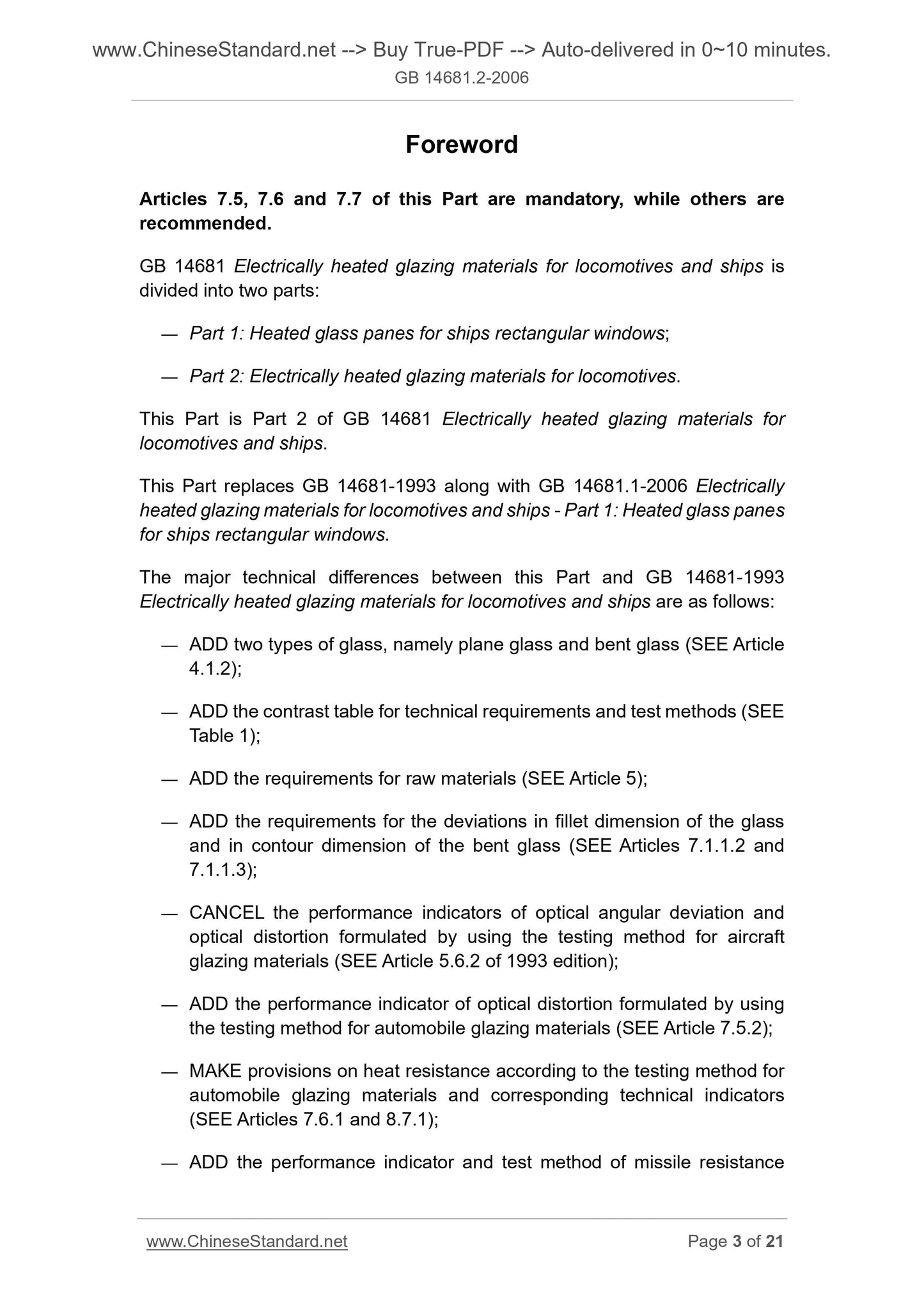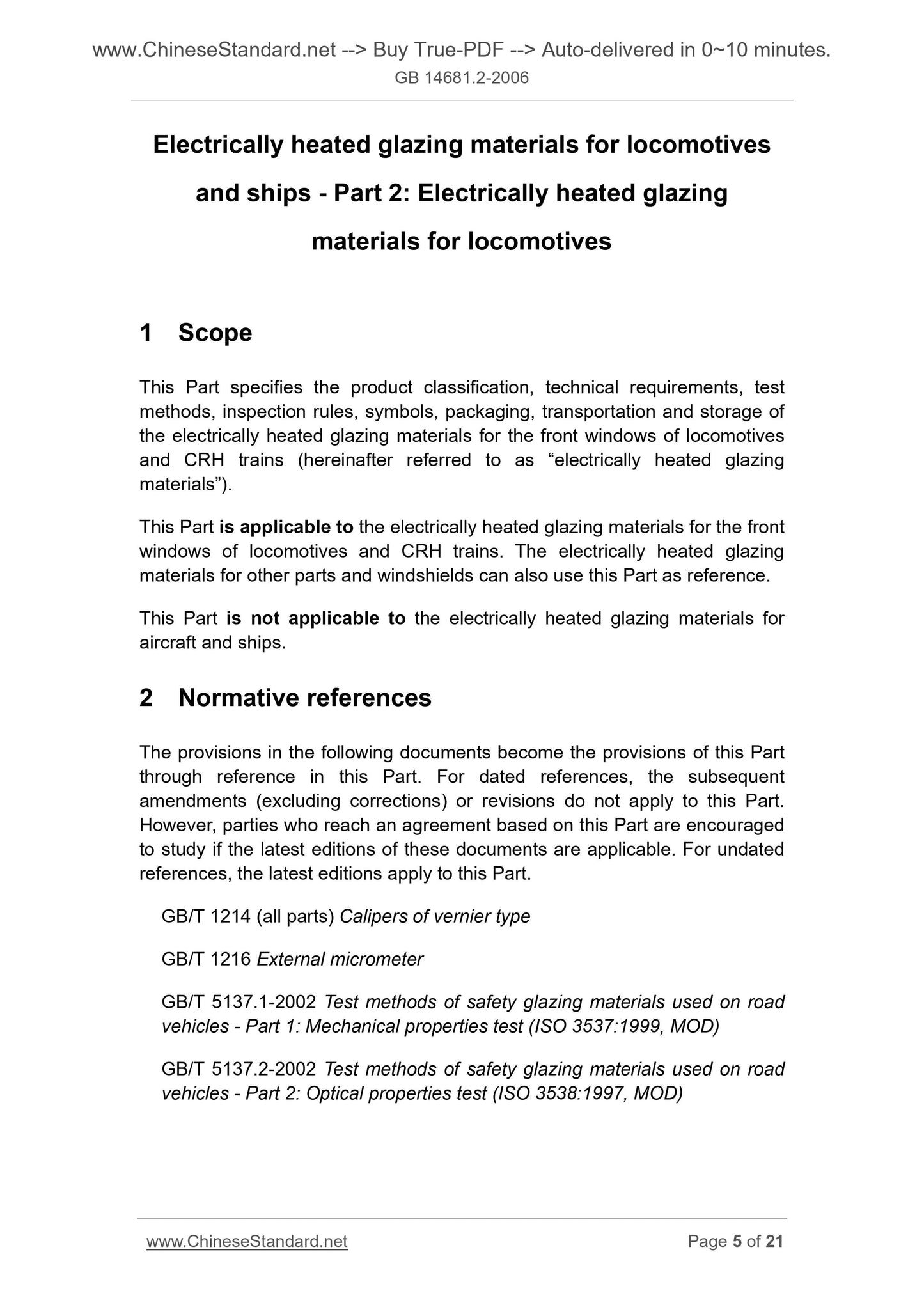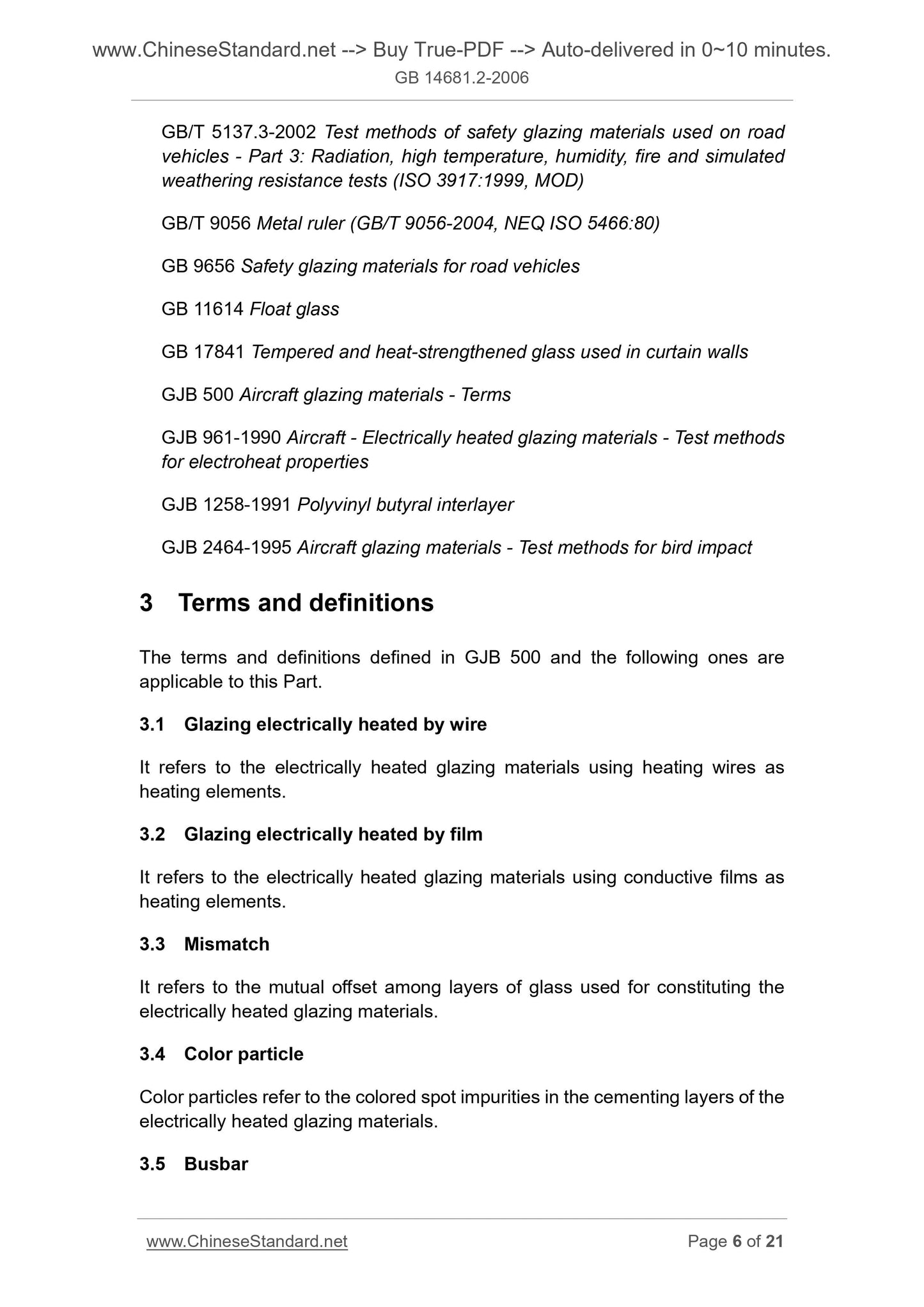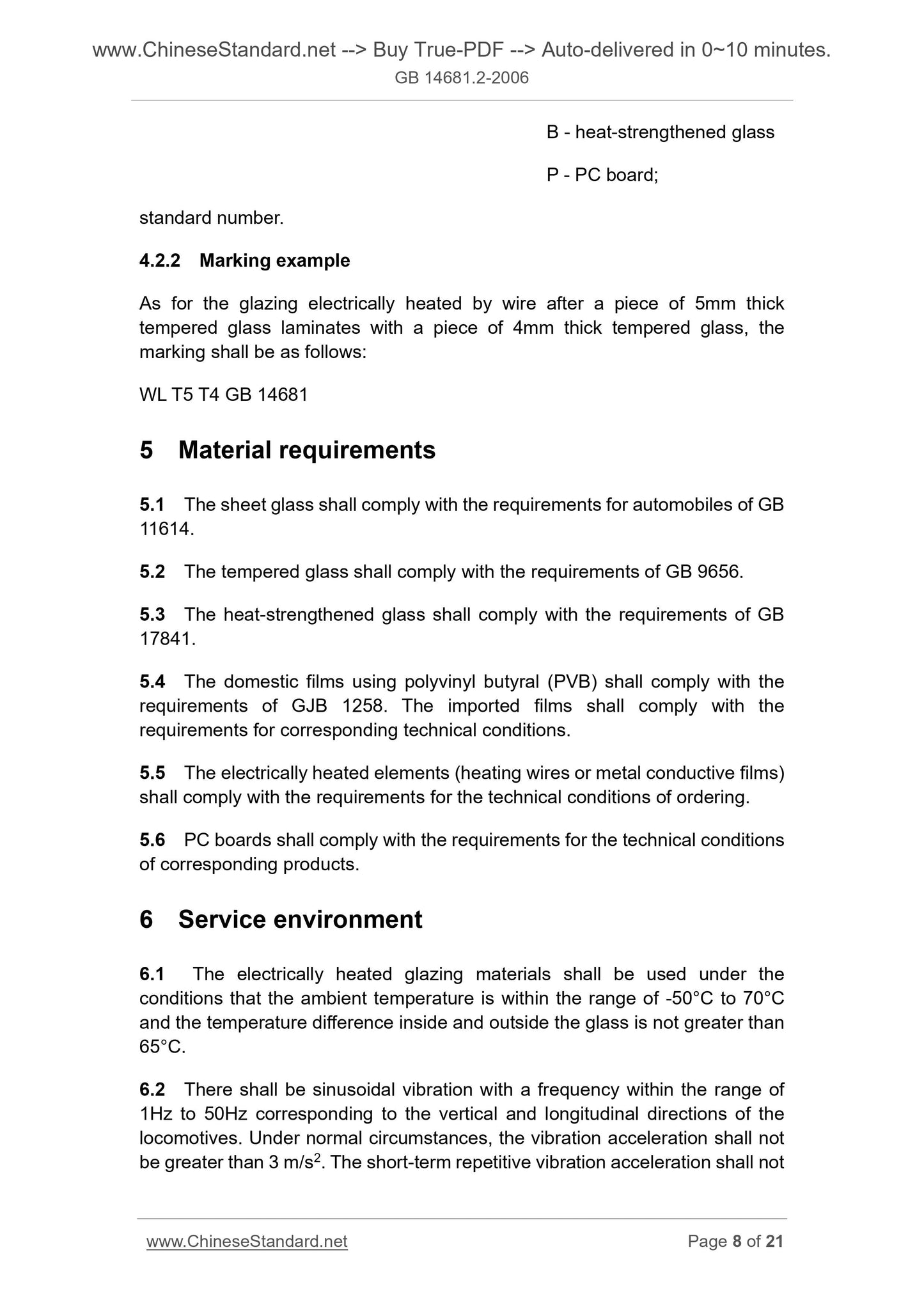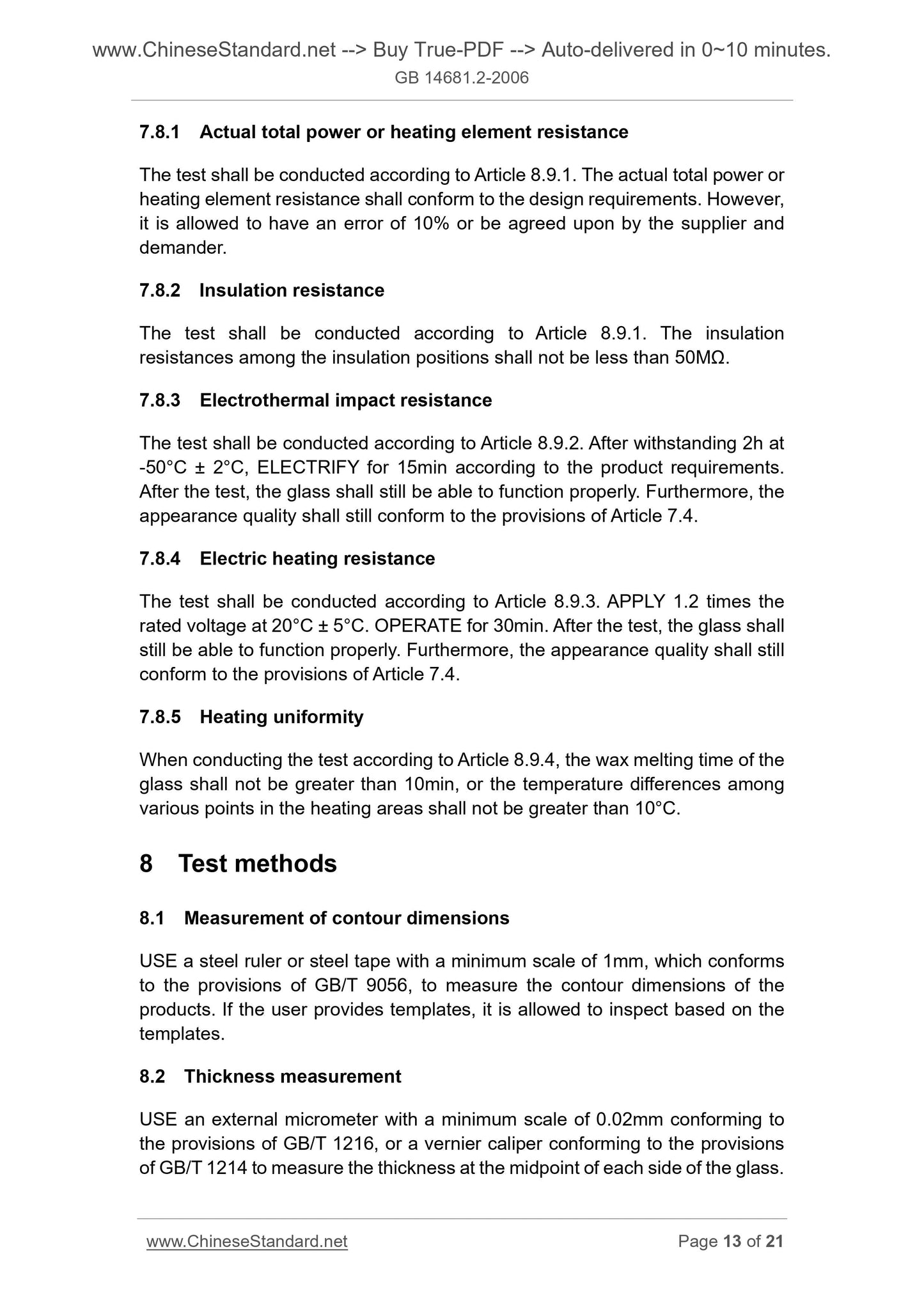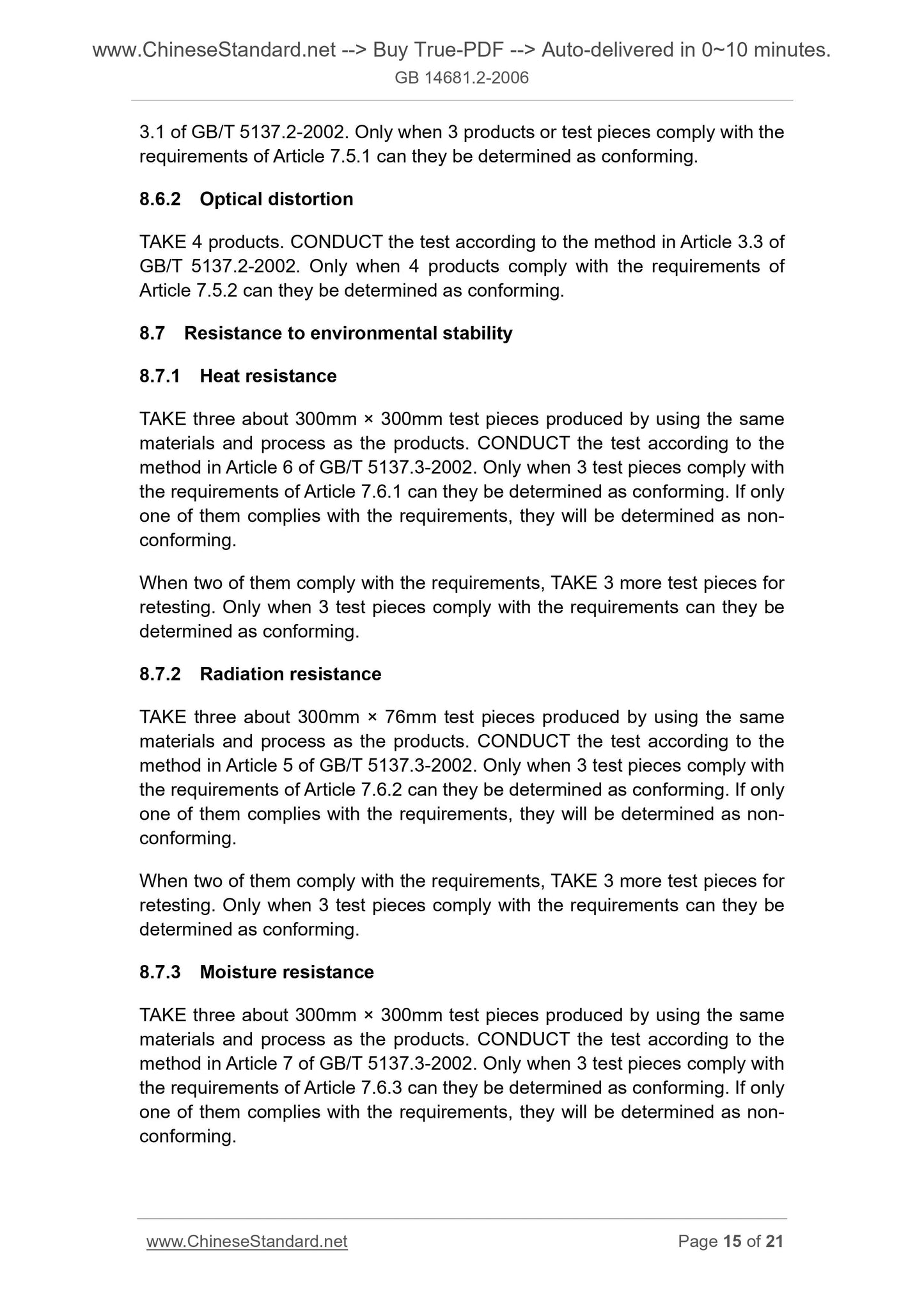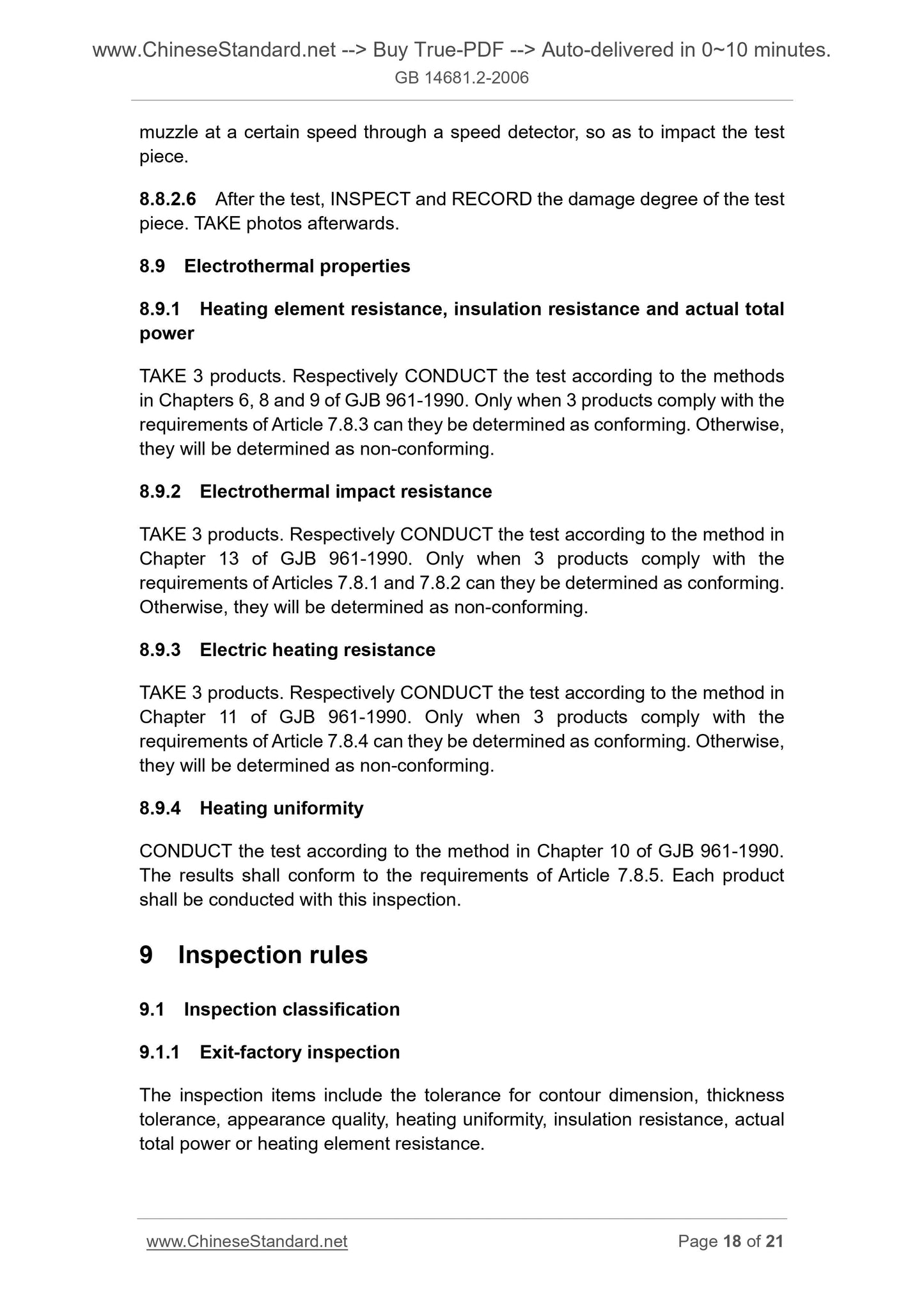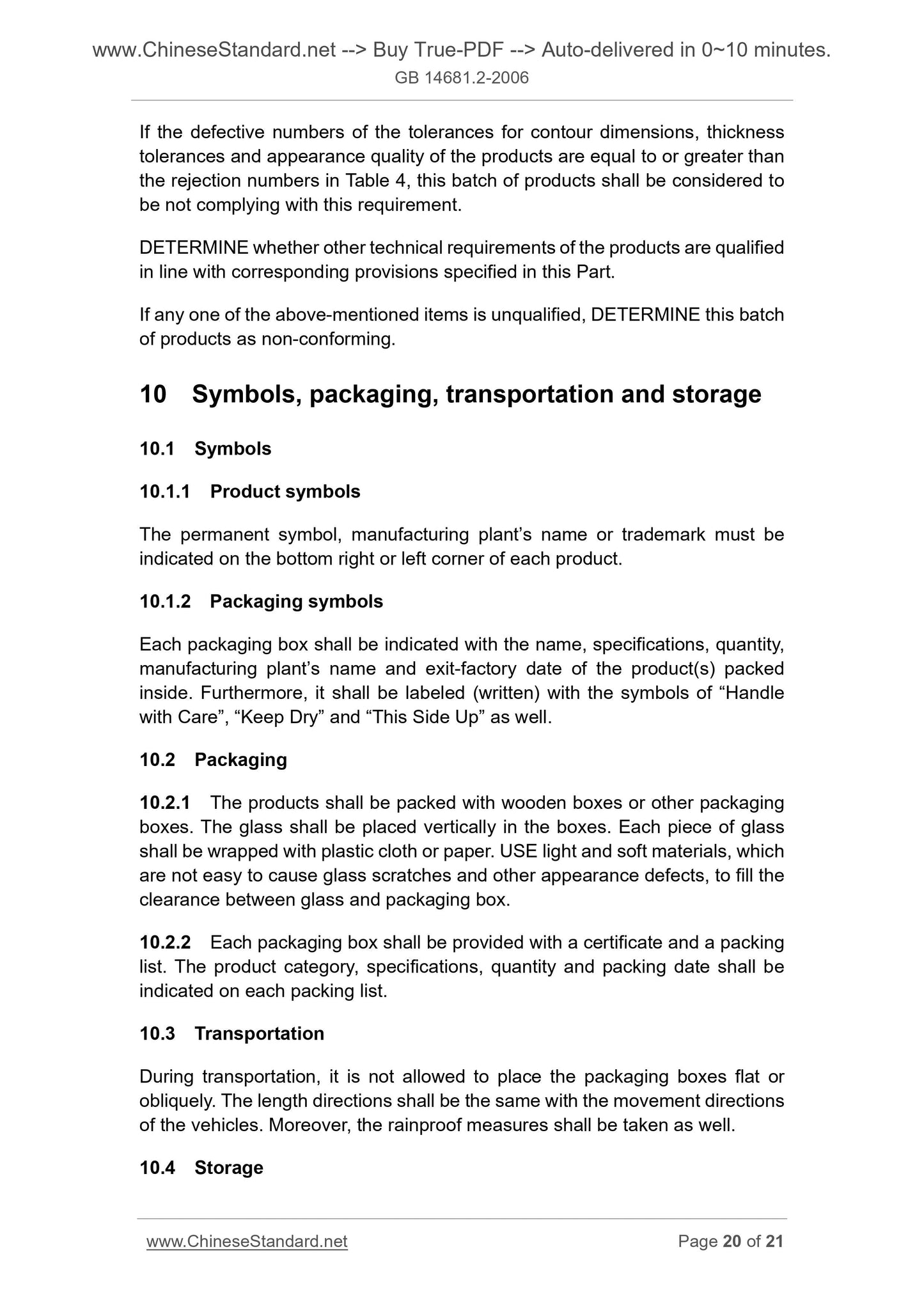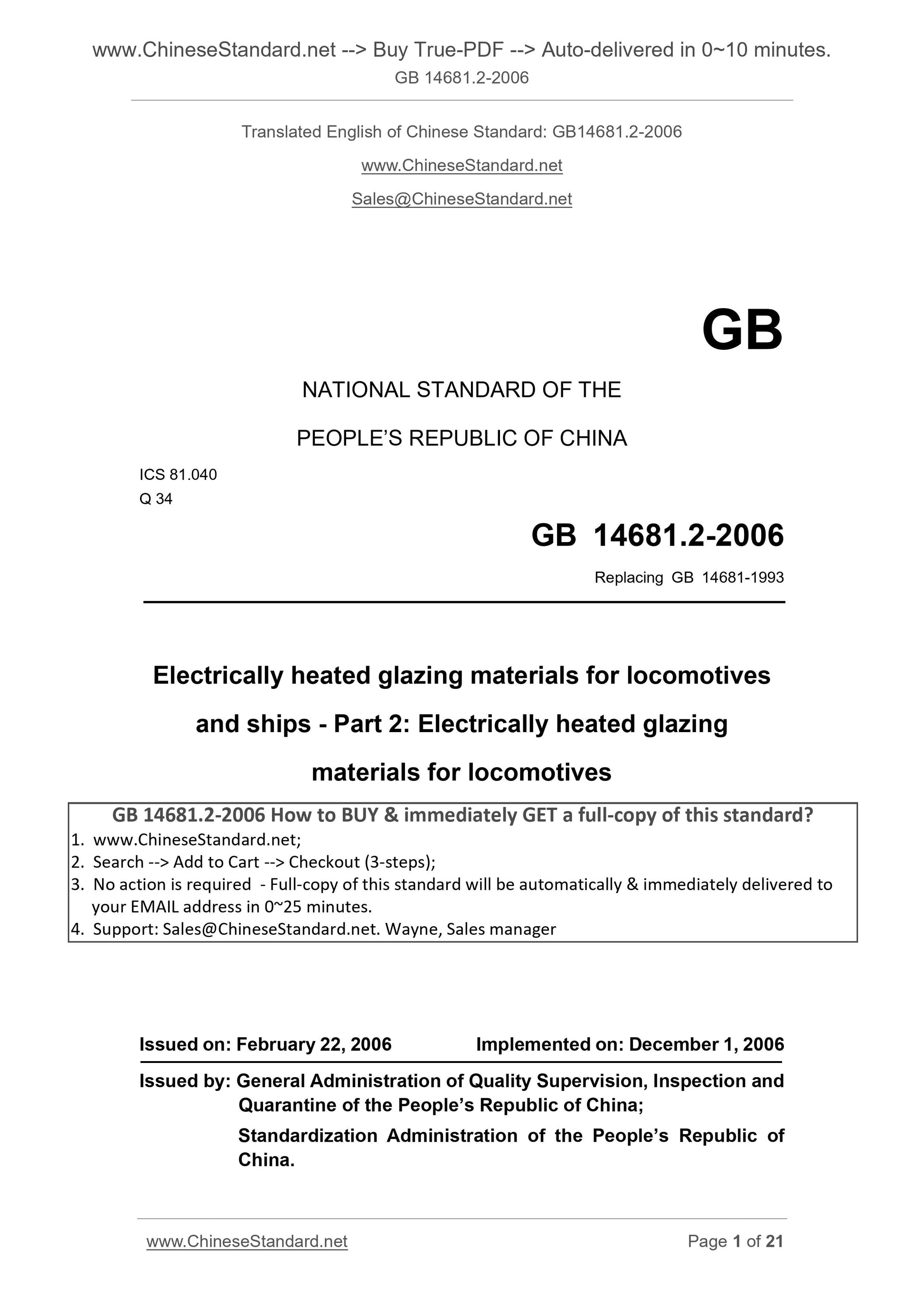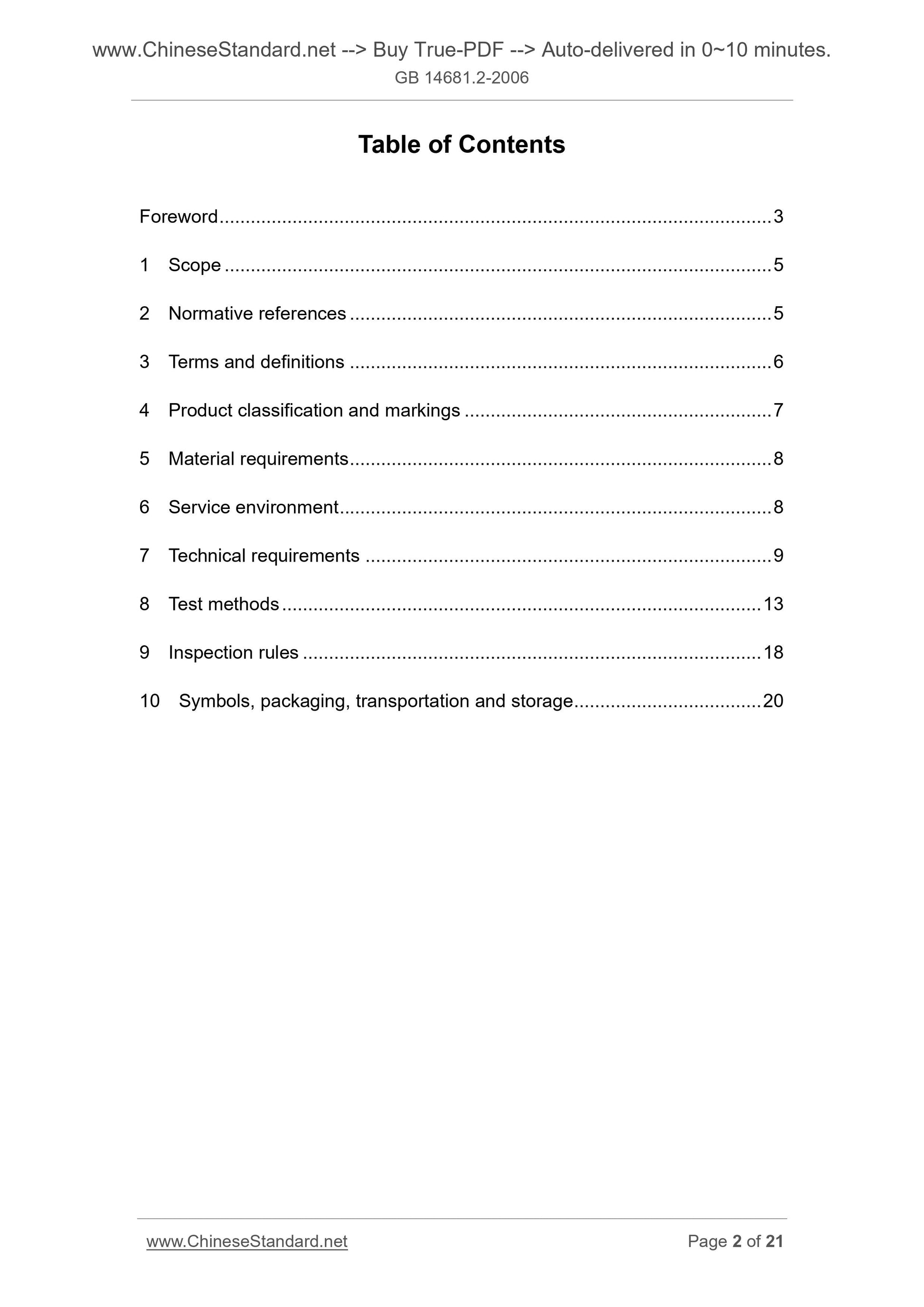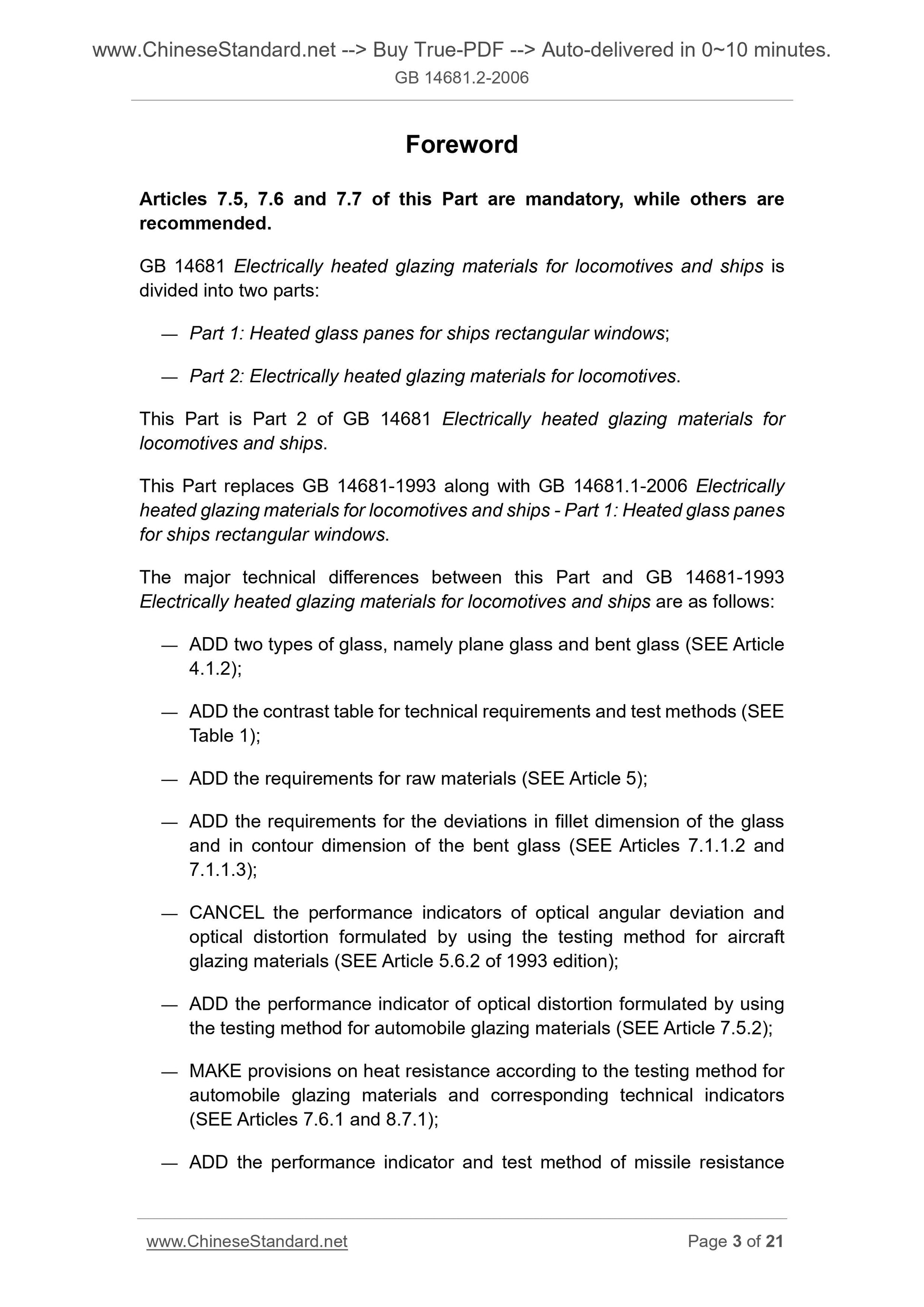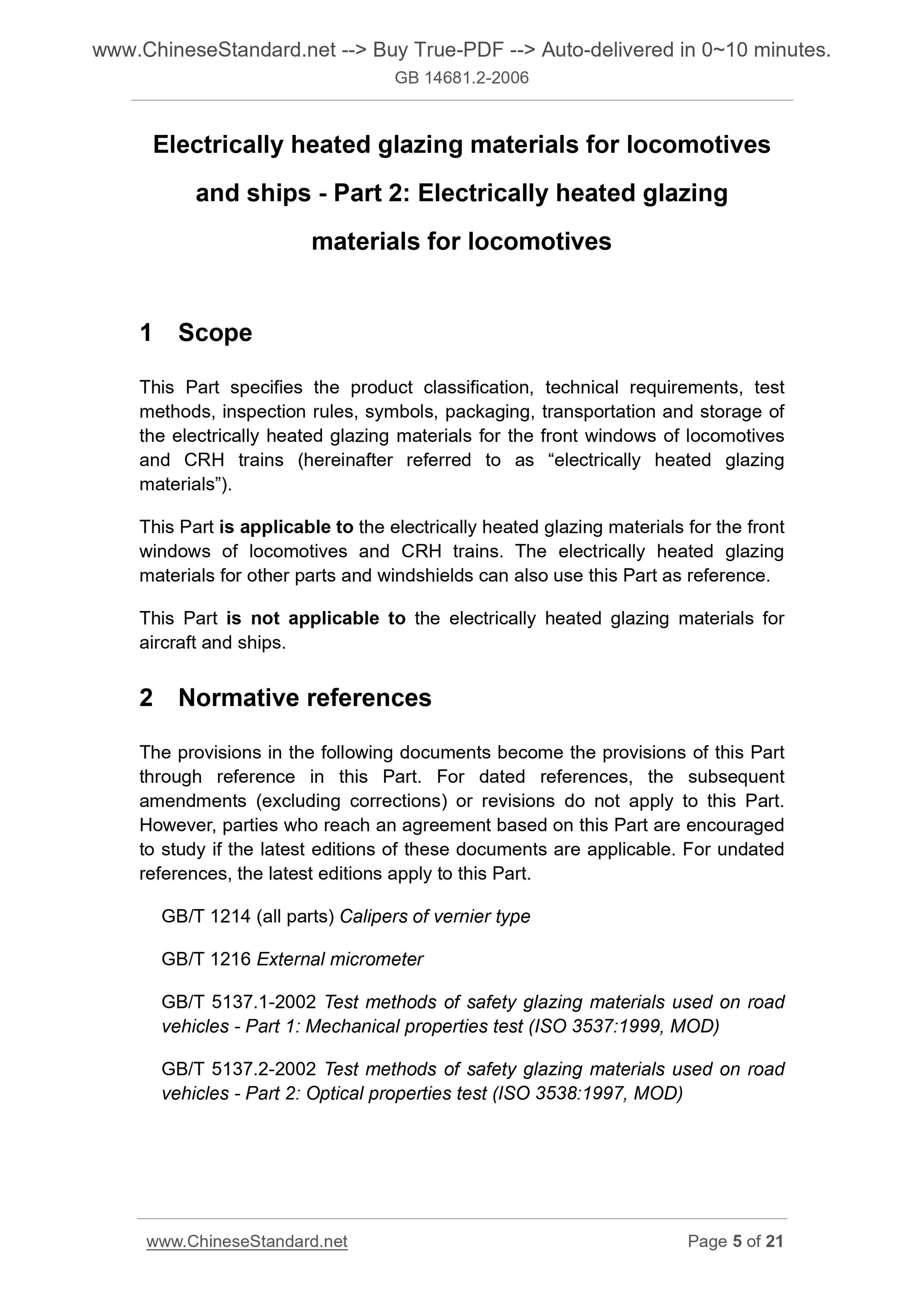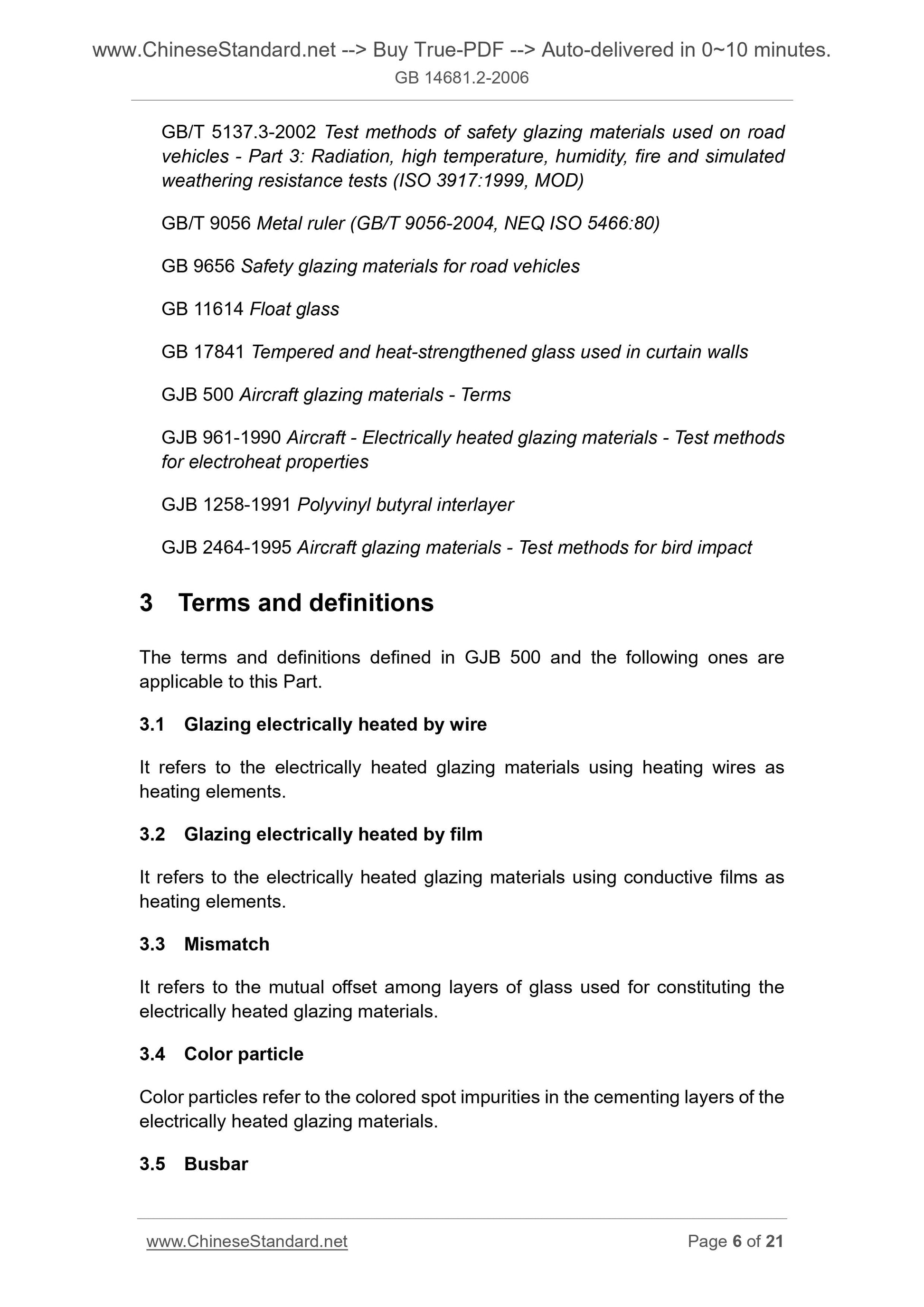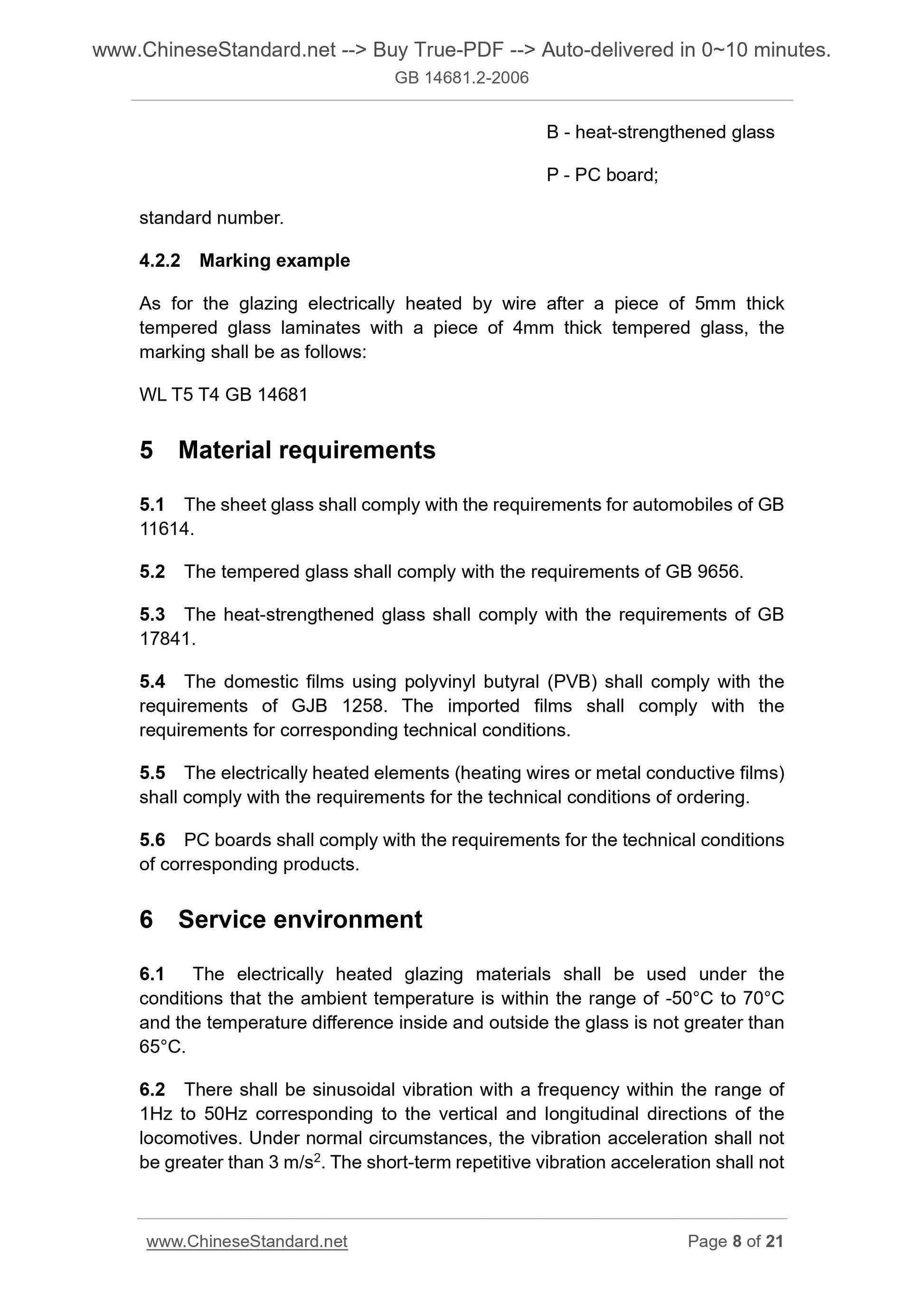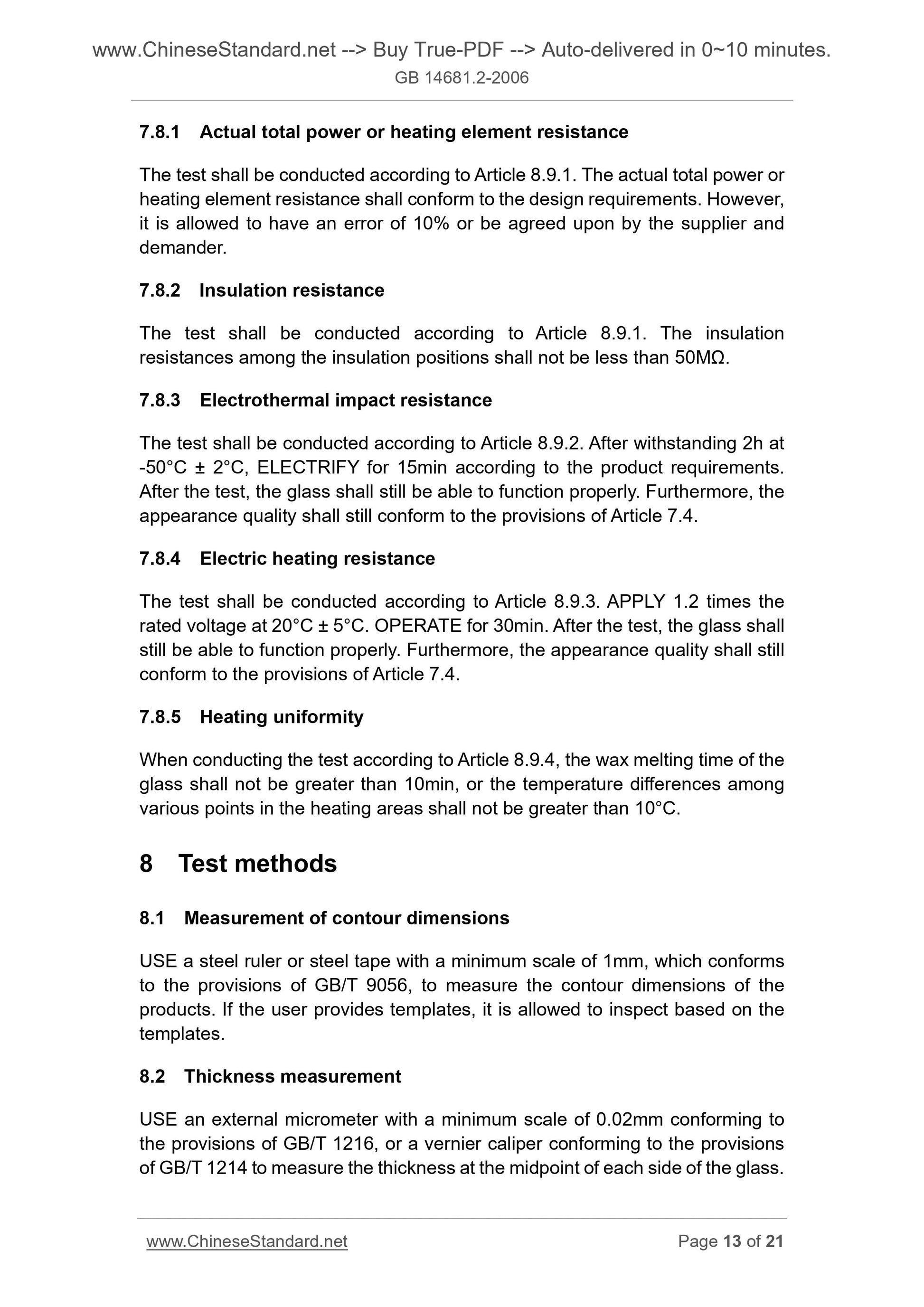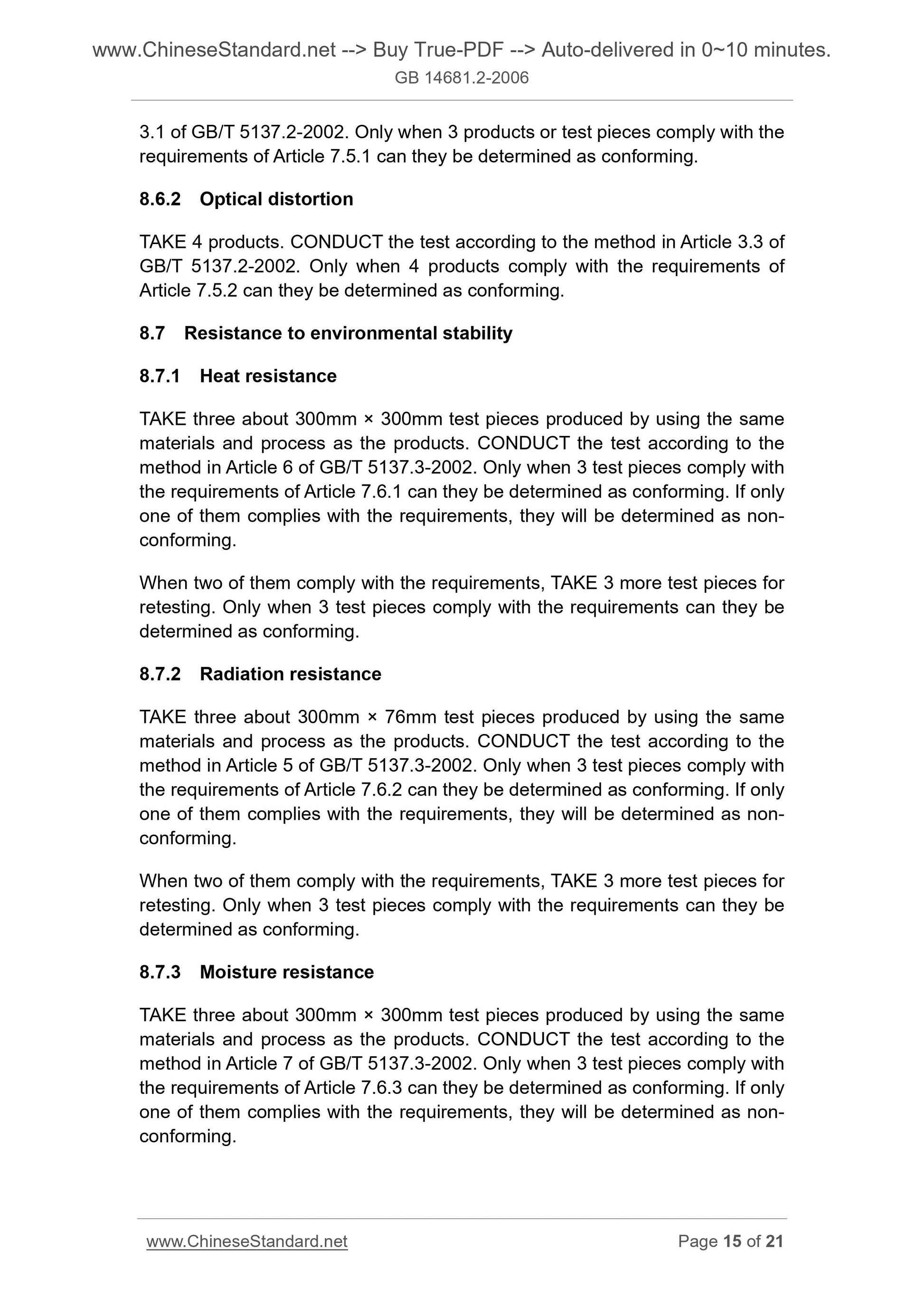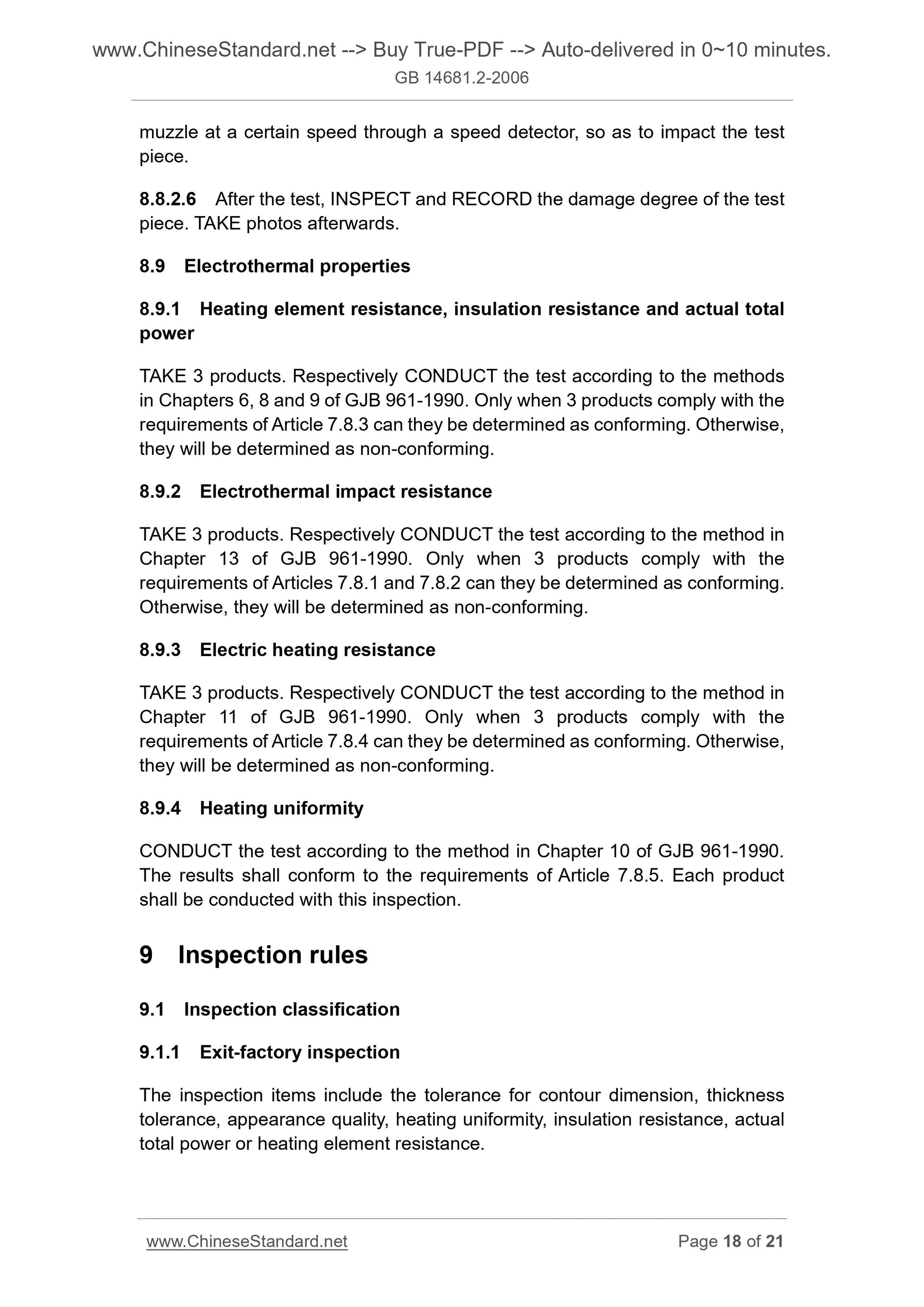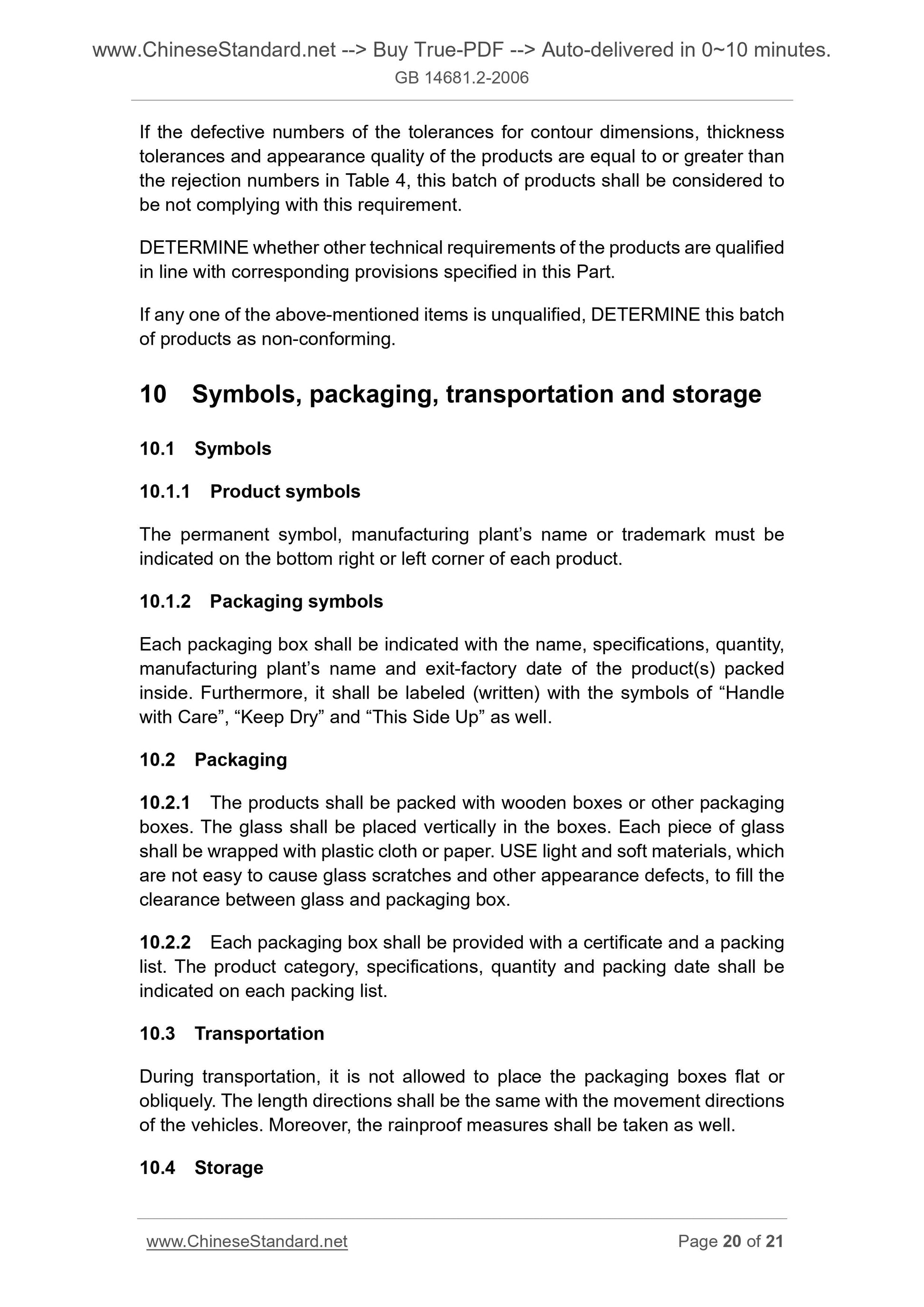1
/
of
10
www.ChineseStandard.us -- Field Test Asia Pte. Ltd.
GB 14681.2-2006 English PDF
GB 14681.2-2006 English PDF
Regular price
$85.00
Regular price
Sale price
$85.00
Unit price
/
per
Shipping calculated at checkout.
Couldn't load pickup availability
GB 14681.2-2006: Electrically heated glazing materials for locomotives and ships - Part 2: Electrically heated glazing materials for locomotives
Delivery: 9 seconds. Download (and Email) true-PDF + Invoice.Get Quotation: Click GB 14681.2-2006 (Self-service in 1-minute)
Newer / historical versions: GB 14681.2-2006
Preview True-PDF
Scope
This Part specifies the product classification, technical requirements, testmethods, inspection rules, symbols, packaging, transportation and storage of
the electrically heated glazing materials for the front windows of locomotives
and CRH trains (hereinafter referred to as “electrically heated glazing
materials”).
This Part is applicable to the electrically heated glazing materials for the front
windows of locomotives and CRH trains. The electrically heated glazing
materials for other parts and windshields can also use this Part as reference.
This Part is not applicable to the electrically heated glazing materials for
aircraft and ships.
Basic Data
| Standard ID | GB 14681.2-2006 (GB14681.2-2006) |
| Description (Translated English) | Electrically heated glazing materials for locomotives and ships - Part 2: Electrically heated glazing materials for locomotives |
| Sector / Industry | National Standard |
| Classification of Chinese Standard | Q34 |
| Classification of International Standard | 81.040 |
| Word Count Estimation | 12,113 |
| Date of Issue | 2006-02-22 |
| Date of Implementation | 2006-12-01 |
| Older Standard (superseded by this standard) | GB 14681-1993 |
| Regulation (derived from) | Announcement of Newly Approved National Standards No. 6 of 2006 (No. 93 overall) |
| Issuing agency(ies) | General Administration of Quality Supervision, Inspection and Quarantine of the People's Republic of China, Standardization Administration of the People's Republic of China |
| Summary | This Chinese standard applies to locomotives, EMUs Electrically heated front window glass product classification, technical requirements, test methods, inspection rules and signs, packaging, transportation, storage and other requirements. |
Share
